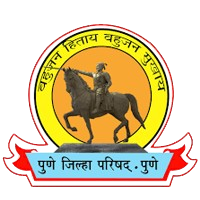Agriculture Department
Agriculture is the backbone of the Indian economy, and the development of the agricultural sector is crucial for the overall progress of the country. In the post-independence era, especially from 1950 to 1965, significant emphasis was placed on the expansion of agricultural land. During this period, efforts were made to increase the area under cultivation as well as expand irrigated farmland. Additionally, in 1961-62, the use of chemical fertilizers was introduced.
From 1965-66 onwards, the development of improved crop varieties laid the foundation for the Green Revolution in India.Subsequent five-year plans further accelerated agricultural development. To boost production, improved seeds, efficient fertilizer management, controlled use of pesticides, and water conservation techniques were widely adopted. Moreover, to ensure farmers had access to modern agricultural knowledge, initiatives such as agricultural universities, experimental projects, field visits, seminars, conferences, fairs, and exhibitions were organized. These efforts significantly contributed to increasing agricultural production.
Although India has achieved self-sufficiency in food grain production, the need to maximize economic benefits for farmers through modern agricultural technology remains essential. Therefore, various schemes are being implemented to promote agricultural processing industries, exports, and horticulture along with advanced farming techniques.
The primary objective of the Zilla Parishad Pune, Agriculture Department is to provide farmers with knowledge of modern agricultural technologies, empower them to increase their income, and ensure the optimal utilization of all available agricultural resources. Following the principle of “Welfare for Many, Happiness for Many,” the Zilla Parishad Pune, Agriculture Department is continuously working for the economic and social advancement of farmers.
Pune District consists of a total of 13 talukas. Total Area: 15,62,018 hectares. Cultivated Land: 9,91,787 hectares (75.9%).
Crop-wise Area Distribution by Season: Kharif Season: 1,95,710 hectares Rabi Season: 2,29,712 hectares Summer Season: 11,094 hectares
The district’s climate is generally tropical. The western region has a cool climate, the central part is relatively dry , whereas the eastern talukas experience hot and dry conditions. The average annual rainfall is around 845.8 mm, with the majority of rainfall occurring due to the southwest monsoon winds.
Important Webpages:-
Agriculture Department, Maharashtra State :- https://krishi.maharashtra.gov.in/ and https://mahadbt.maharashtra.gov.in/Farmer/Login
Agricultural Input License :- https://aaplesarkar.mahaonline.gov.in/en
Information on Points 01 to 17 as per Section 4(1)(b) of the Right to Information Act 2005
Schemes implemented by Agriculture Department , Zilla Parishad pune
- DPC (SC) : Dr. Babasaheb Ambedkar Krushi Swawlamban Yojana
- DPC (ST) : Birsa Munda Krushi Kranti Yojana (TSP & OTSP).
Schemes includes following components:
| Sr. No. | Component | Maximum subsidy (Rs.) |
| 1 | Construction of new well | 400000/- |
| 2 | Repairing of old well | 100000/- |
| 3 | Lining to the Farm Pond | 200000/- |
| 4 | Inwell Boring | 40000/- |
| 5 | Electricity connection charges | 20000/- |
| 6 | Electric Pumpset | 40000/- |
| 7 | Solar pumpset | 50000/- |
| 8 | HDPE/PVC pipes | 50000/- |
| 9 | Sprincler Irrigation system | 47000/- |
| 10 | Drip Irrigation system | 97000/- |
| 11 | Bullock / Tractor operated Machinery | 50000/- |
| 12 | Kitchen Garden | 5000/- |
| 13 | Boring | 50000/- |
The functioning of the Department of Agriculture
- The sampling of agriculture inputs like seed, fertilizer and insecticide etc at the producers, distributors and vendors levels was analyzed from the notified quality control laboratory and further court procedures on nonstandard samples.
- Checking the production centers, laboratory, storage centers, sales centers, etc. from manufacturers, distributors and vendors.
- Violation of legal matters, suspected innocence, unauthorized, bogus, order to offer off sales, seizure and further legal proceedings.
- Controlling the supply and sale of fertilizers in the district.
District level and district level grievance redressal rooms are set up to reduce the availability and grievances in the district.
Agri Input Quality Campaign District Level / Taluka Level Flying Squad Design
District level
| Sr. No | Officer Name | Designation |
| 1 | Agriculture Development Officer Z.P | Squad chief |
| 2 | Sub -Divisional Agriculture Officer, (Related Sector) | Member |
| 3 | Campaign Officers Agriculture Department Z.P | Member |
| 4 | Inspector Weight Measurement | Member |
| 5 | District Quality Control Inspector | Member Secretary |
Taluka level
| Sr. No | Officer Name | Designation |
| 1 | Taluka Agricultural Officer | Squad chief |
| 2 | Agriculture Officer, Taluka Agricultural Office | Member |
| 3 | Inspector Weight Measurement | Member |
| 4 | Circle Agriculture Officer (Related Sector) | Member |
| 5 | Board Agriculture Officer (Related Sector | Member Secretary |
- Telephone : 02026133626
- Address : District Level Office






